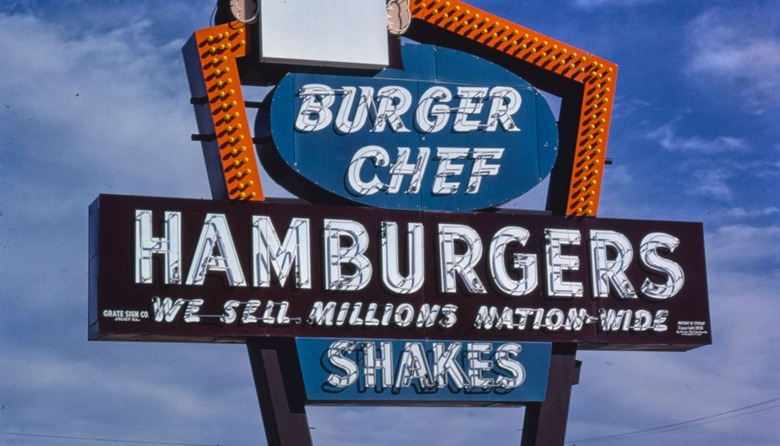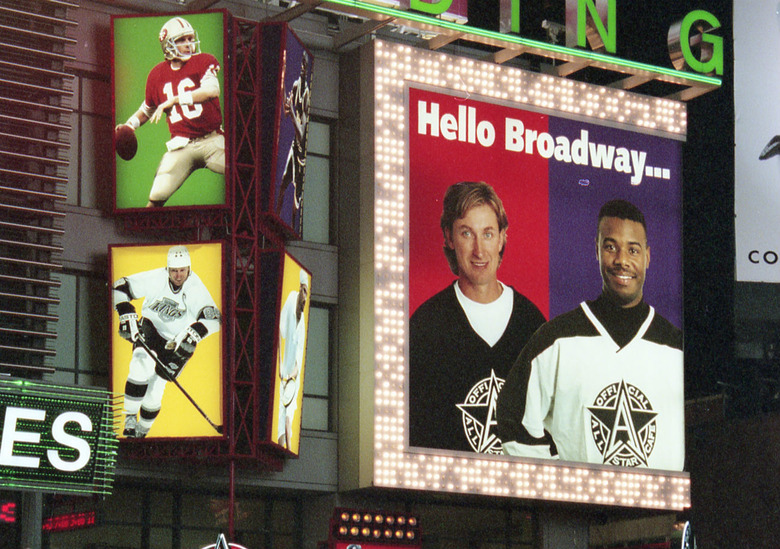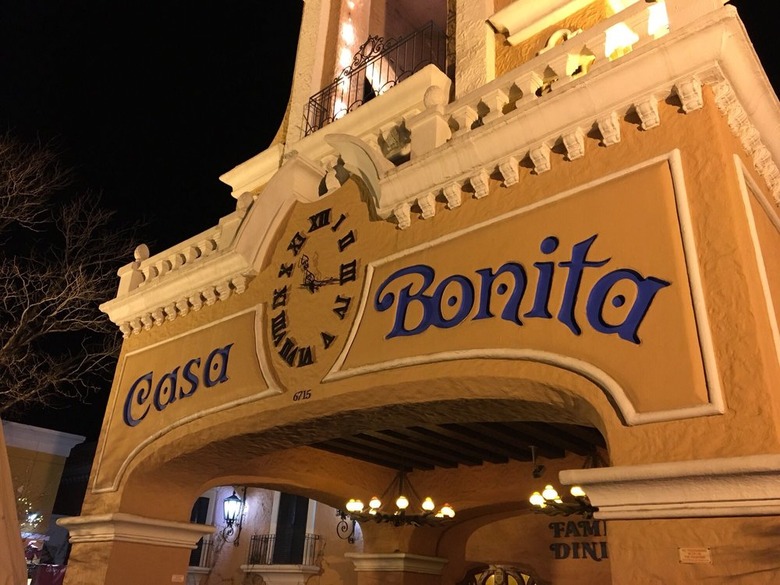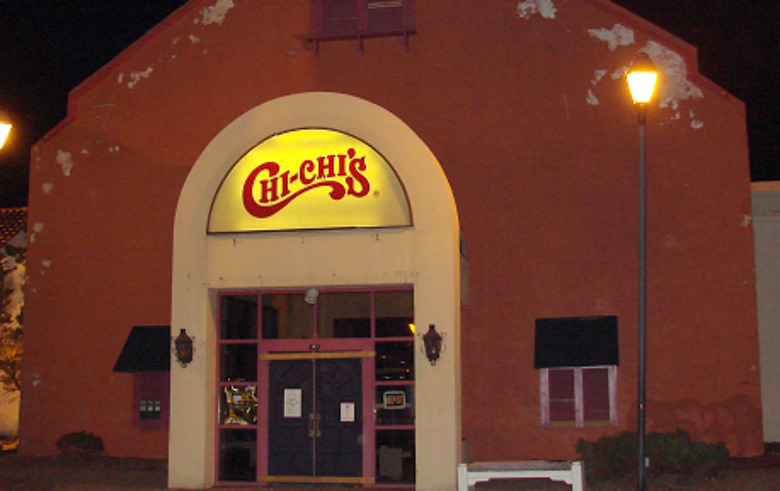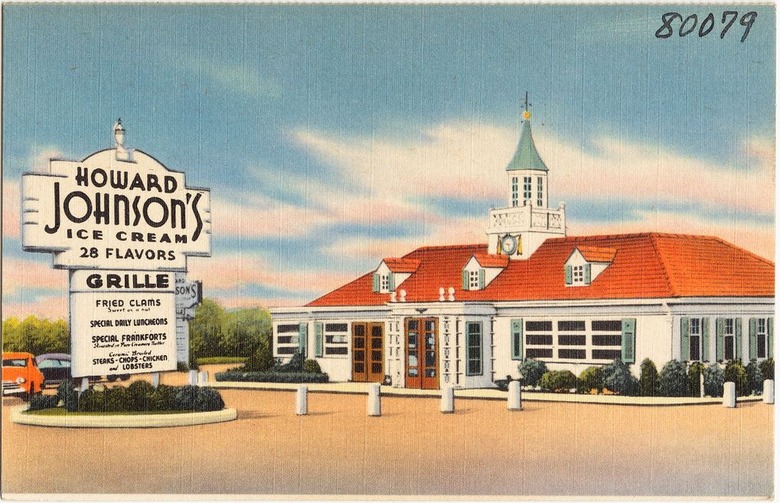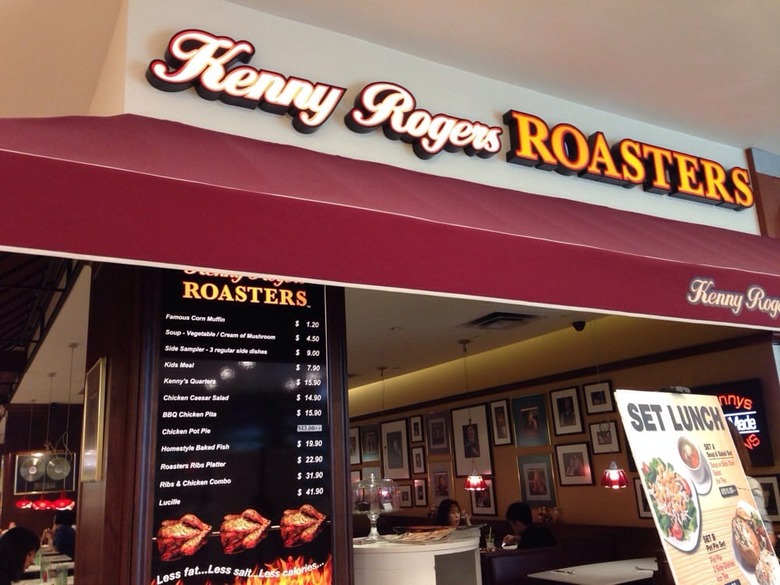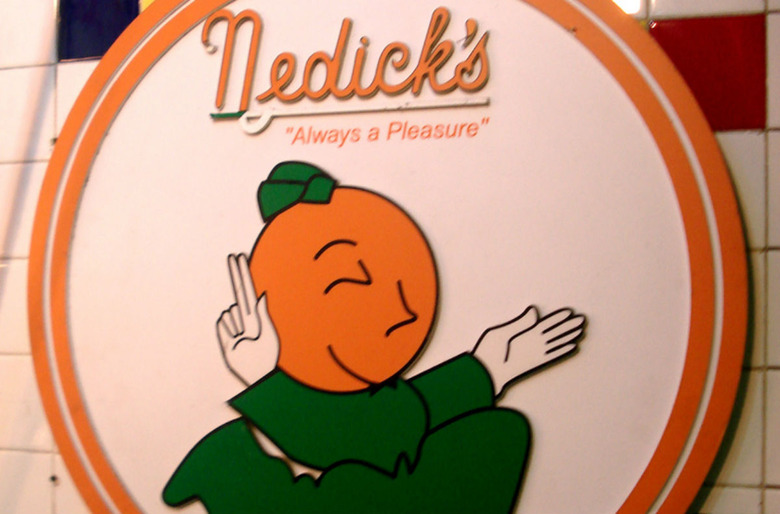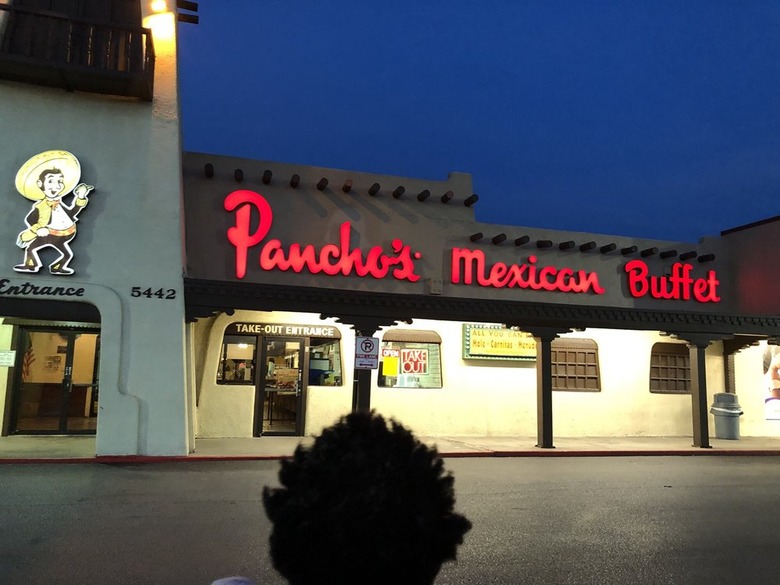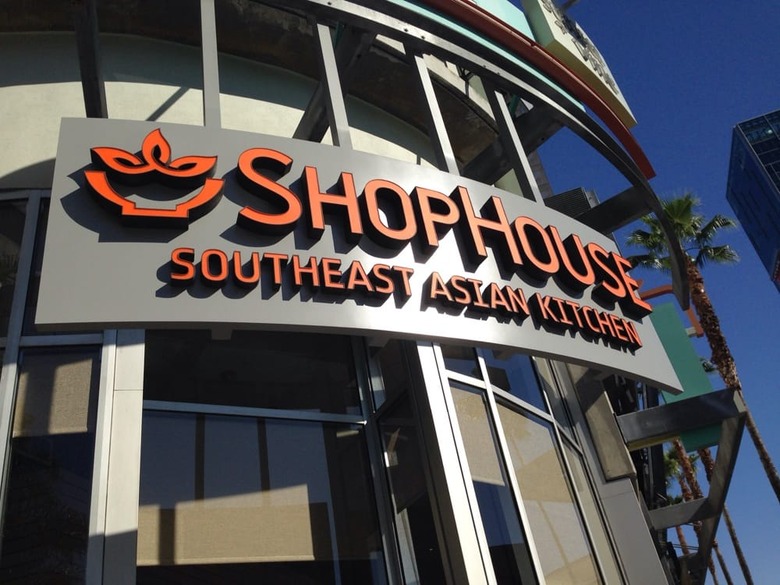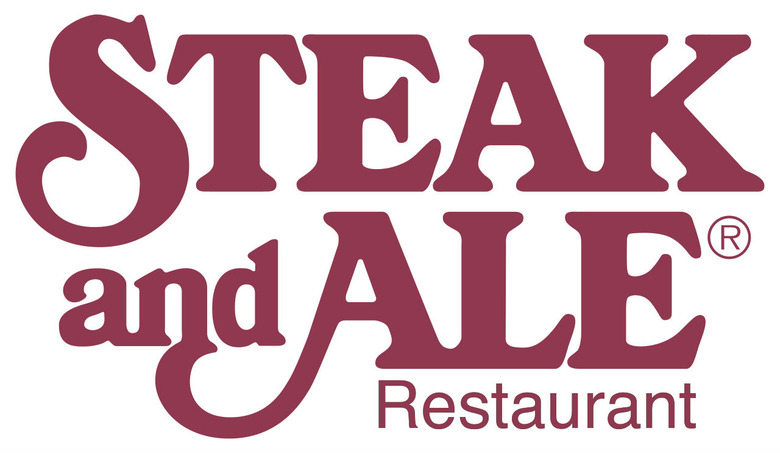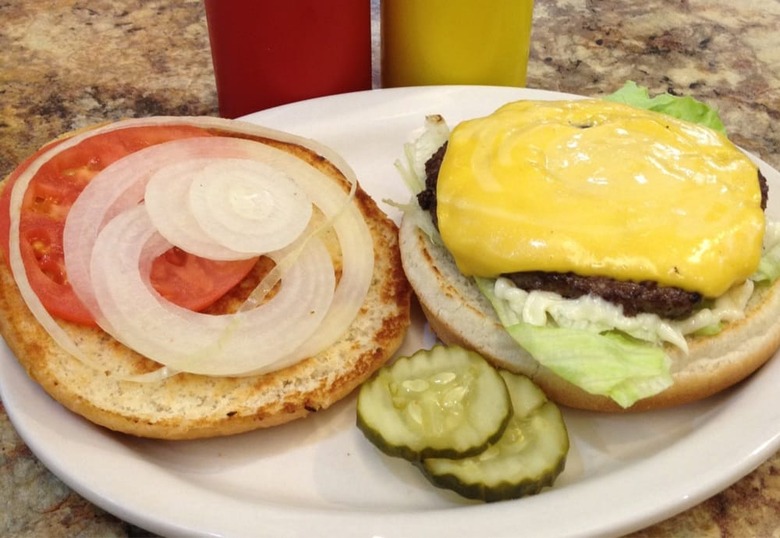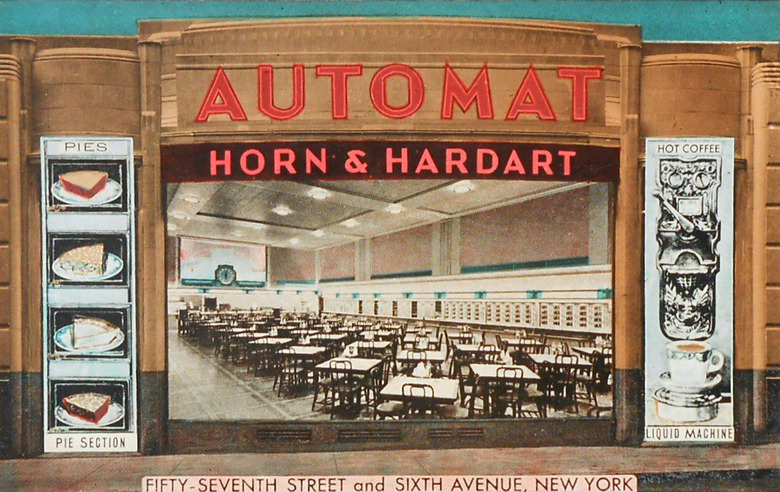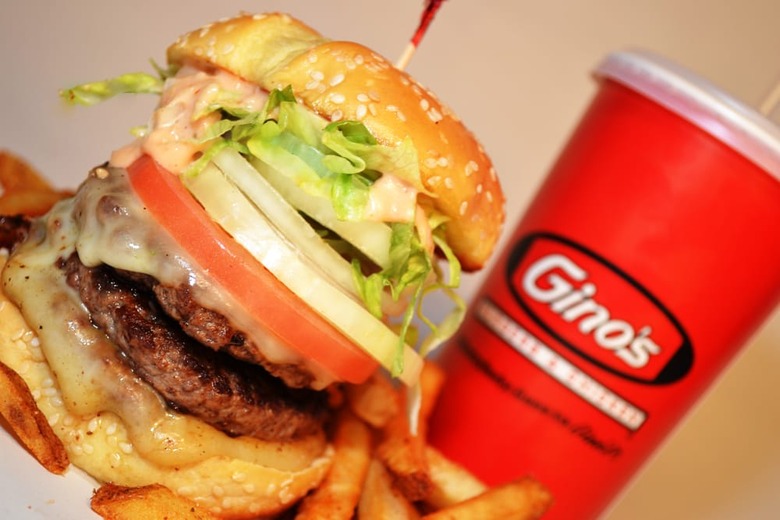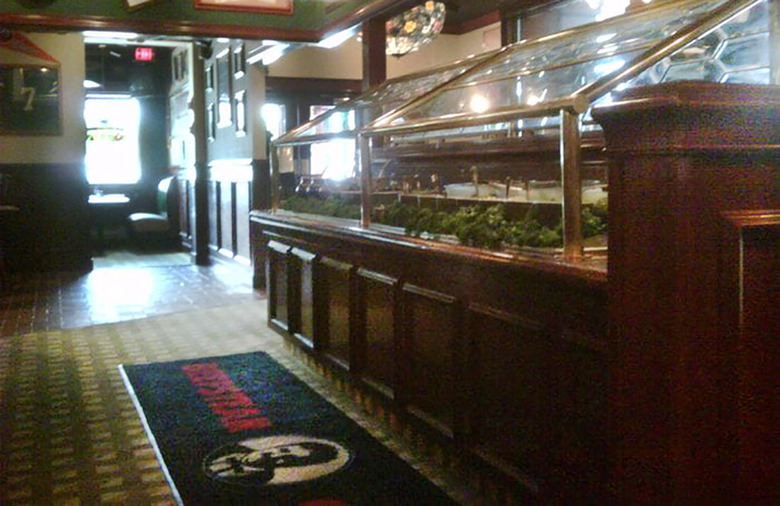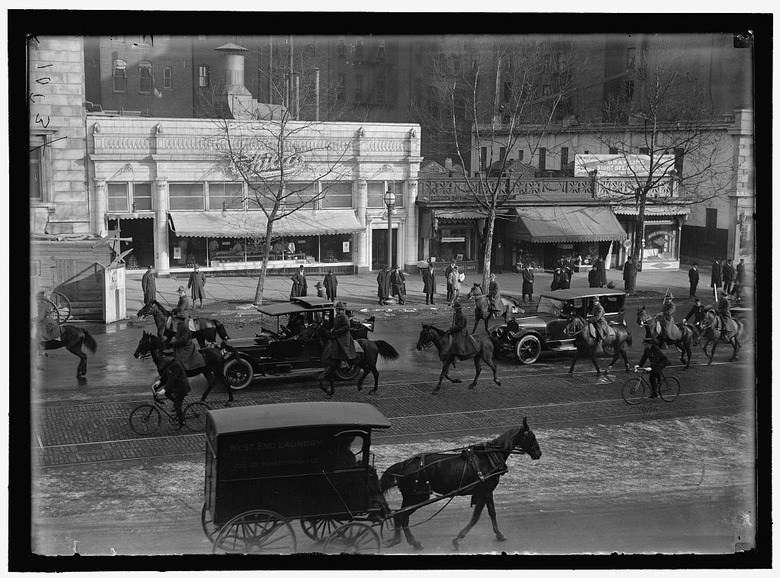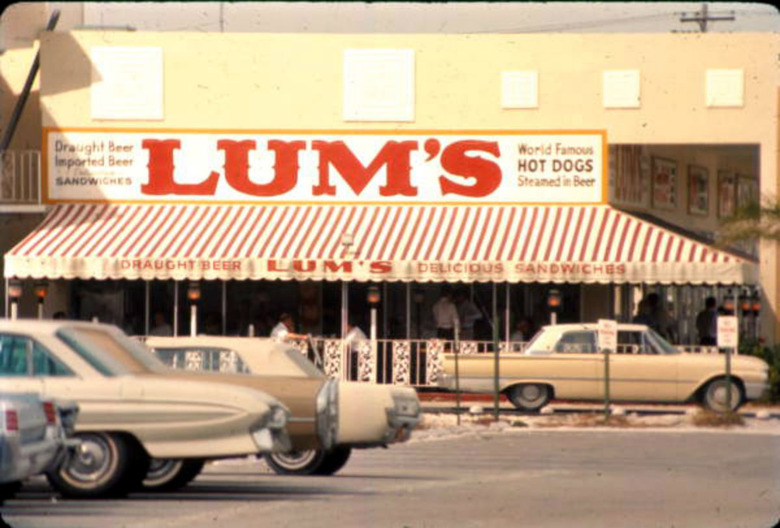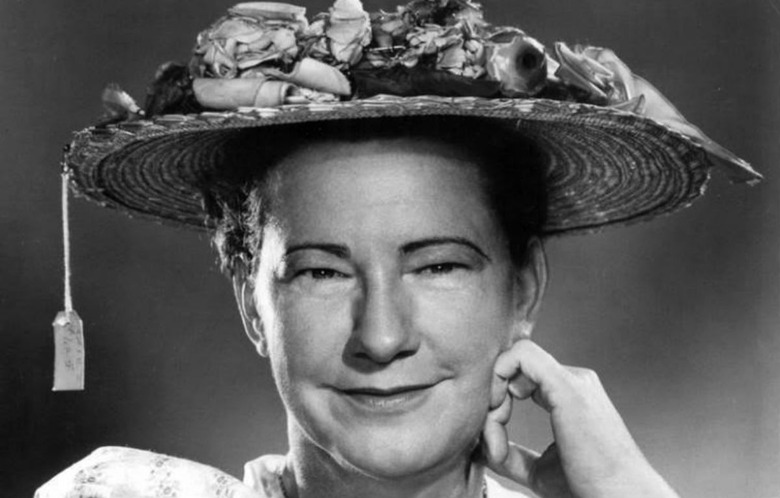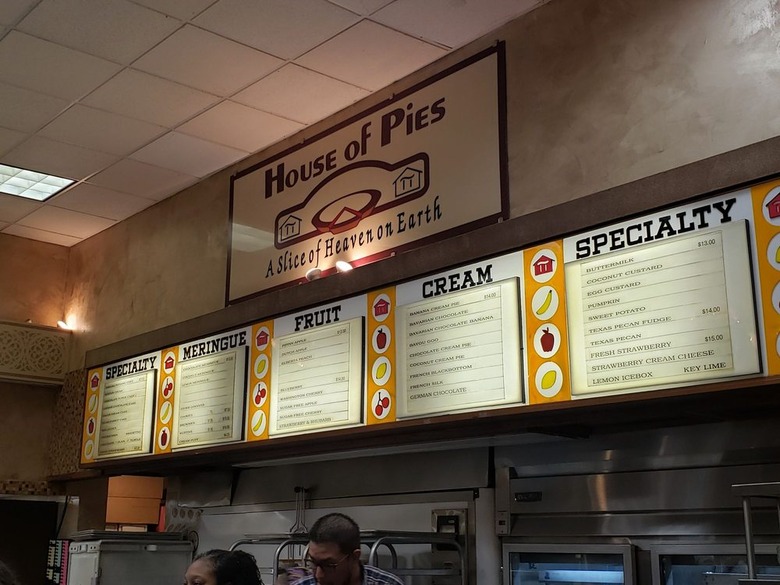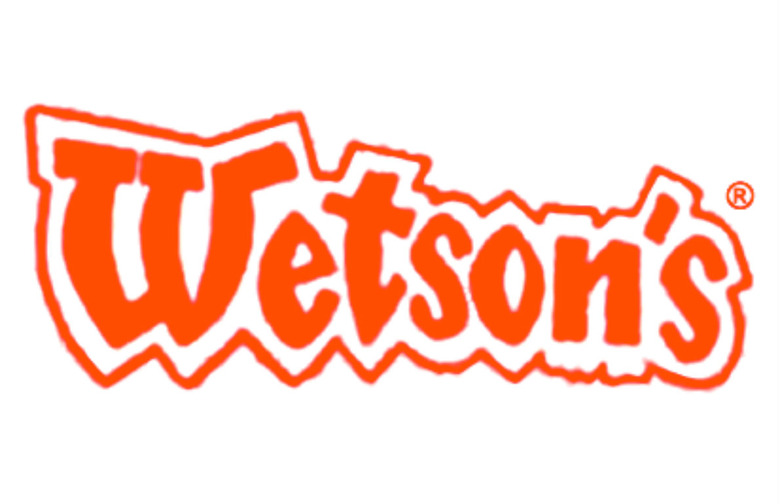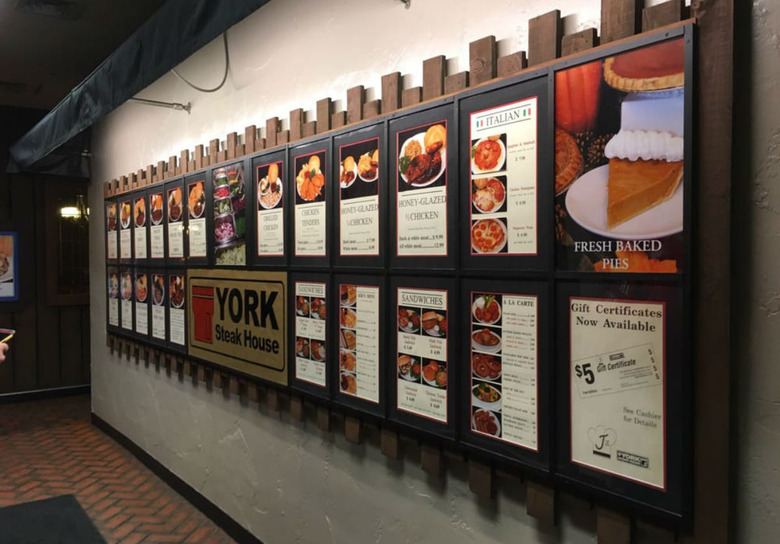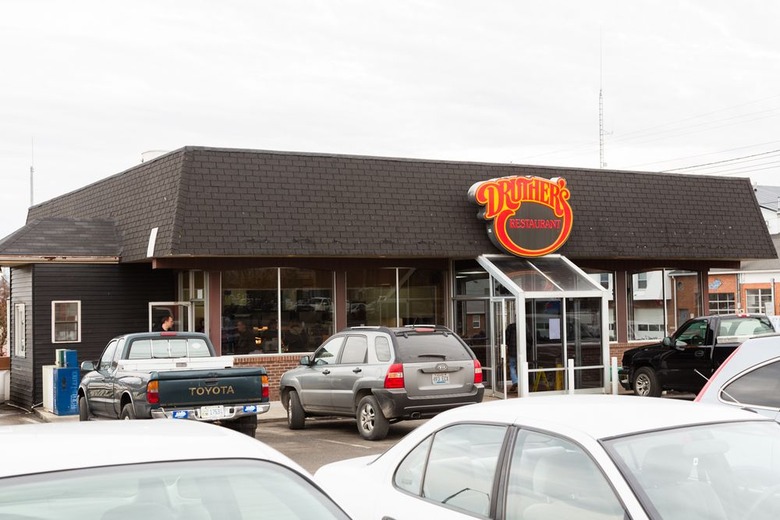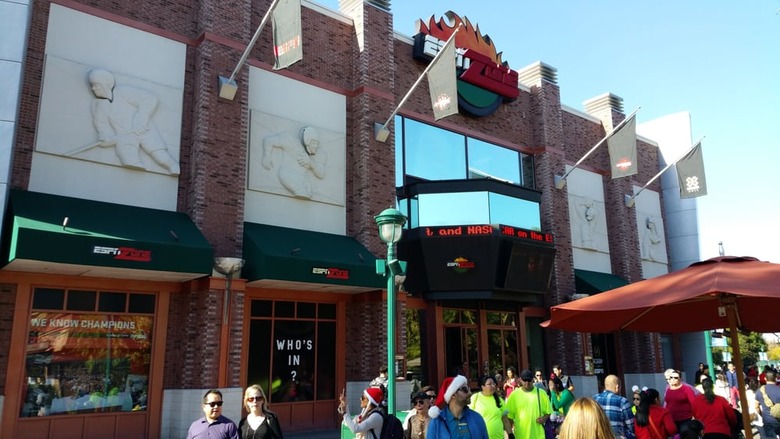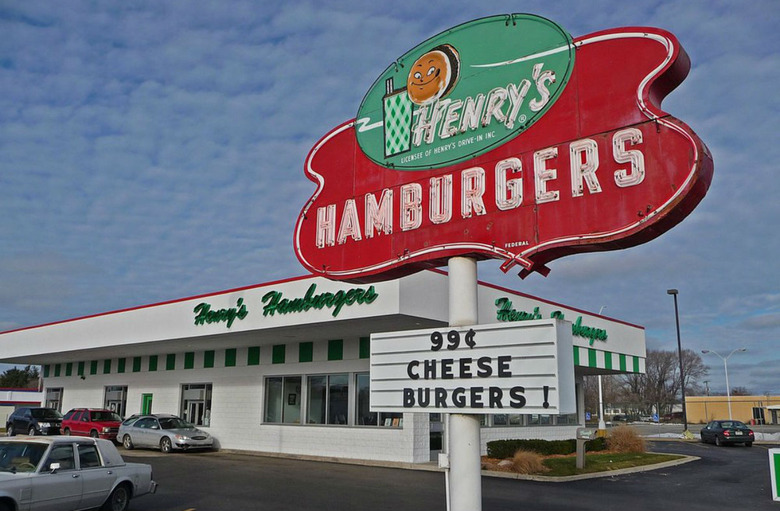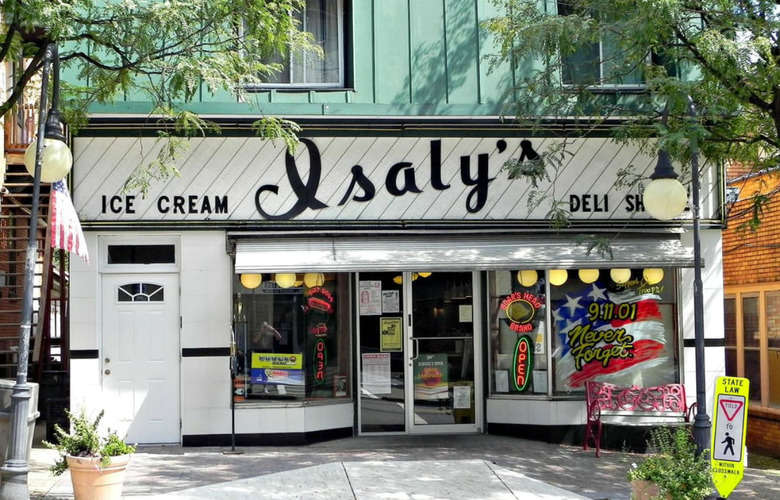Chain Restaurants We Bet You Forgot Existed
Some chain restaurants seem immortal. It's hard to imagine a world without McDonald's, Applebee's or Subway, but for every Chipotle or beloved regional chain there are dozens of chains that have been swept into the ash heap of history before they could make much of an impact, like the long-gone Chicken George, Doggie Diner and Two Pesos. Remember those? Probably not.
Most of the chains on our list were regional or located in a handful of major cities, and some even opened hundreds of locations and became beloved institutions before meeting their fate. Surprisingly, some remain in business today but are down to just one solitary location where the past is still alive and well. How many of these now-defunct chain restaurants do you remember?
All Star Café
Even though there were only 10 locations of the Planet Hollywood-owned All-Star Café in its late-'90s heyday, odds are you knew about this sports-themed chain, especially if you were a kid. Athletic icons such as Andre Agassi, Joe Montana, Ken Griffey Jr. and Shaq all invested in the restaurant, and some appeared in commercials for it. All Star Café opened in prime locations across the country, including Times Square and Walt Disney World. Equal parts gift shop, memorabilia store and restaurant, All Star Café never quite had the same appeal as similar theme restaurants like Planet Hollywood itself or the Hard Rock Café. The last All Star, located in Walt Disney World's Wide World of Sports, closed in 2007, and is just one example of how Disney World has changed over the years.
Casa Bonita
A visit to Casa Bonita, which had five locations — in Tulsa and Oklahoma City, Oklahoma; Lakewood, Colorado; Fort Worth, Texas; and Little Rock, Arkansas — always promised a good time. Some locations could seat more than 1,000 guests, and restaurants were decked out to look like a Mexican village, complete with a village square, a cave, a tropical garden with a stream and waterfall, mariachi bands, a theater and arcades. (The Colorado location even had cliff divers, immortalized in an episode of "South Park.") The first location, in Tulsa, opened in 1971, but now the Lakewood location is the only one that's still in business.
Chi-Chi’s
The first Chi-Chi's Mexican Restaurant opened in downtown Minneapolis in 1975 and was one of the breakout restaurants of the year; by 1986 a whopping 237 locations had been opened, with 42 opening in 1985 alone. From there, unfortunately, it was all downhill. Attempts at expanding to New York City, New England and the South failed, and increased competition, combined with baby boomers aging out of the chain's target demographic and a decline in alcohol consumption, spelled its doom. The coup de grace came in 2003, when green onions served at a Pittsburgh-area outpost set off the largest hepatitis A outbreak in American history, sickening 660 and killing at least four. The remaining 65 restaurants closed the following year, and today the brand exists in the United States only as a salsa product owned by Hormel, which licensed their name. It's probably better to just visit the best Mexican restaurant in your state, anyway.
Howard Johnson’s
Howard Johnson's is synonymous with 1950s and '60s dining. It was launched by entrepreneur Howard Johnson in the 1920s as a soda fountain and lunch counter, and by 1954 there were 400 outposts in 32 states. One of the first major restaurant chains, it went public in 1961 with 605 restaurants and 88 motor lodges, both of which were major fixtures dotting the new American highway system that experienced monumental growth during this time. The company peaked in the mid-1970s, but business fell off after that. The business model of serving pre-made high-quality food in traditional dining rooms lost popularity amid the rise of fast-food chains like McDonald's. After many changes in ownership over the years, only one Howard Johnson's restaurant remains, in Lake George, New York.
Kenny Rogers Roasters
If you best remember Kenny Rogers Roasters from a classic "Seinfeld" episode, you're not alone. This chain, which the singer launched in 1991 along with KFC mogul John Y. Brown, ballooned to 425 locations, but a country singer's name and a focus on rotisserie chicken didn't exactly make it stand out in an already crowded field, and it went bankrupt in 1998 after being bought by Nathan's. But Rogers need not worry; he's just one of the many celebrities who tried to break into the food world and failed.
Nedick’s
Nedick's got its start in New York in the 1920s, selling orange drink, coffee, doughnuts and hot dogs, and by the 1950s it had expanded to nearly every major city along the Eastern Seaboard north of D.C. It shut down in the early 1980s, but was briefly resurrected by the Riese Organization — which manages chains including Friday's, Pizza Hut and KFC — in 2003. Three new Nedick's locations opened in high-profile New York locations that year, but they've all since closed.
Pancho’s Mexican Buffet
Pancho's was founded in El Paso, Texas, in 1958, and its all-you-can-eat buffet made it a hit in states including Arizona, New Mexico, Oklahoma, Louisiana and Mississippi. There were 55 locations at its peak in 1988, but all corporate-owned locations closed down in 2012 and only a handful of franchises remain in business today.
ShopHouse Southeast Asian Kitchen
ShopHouse was Chipotle's attempt to replicate its successful fast-casual model, but with a Southeast Asian approach. The first location opened in September 2011 in Washington, D.C, and it was hailed when it opened as a major success thanks to its format — customers would choose a base (noodles, rice or salad), meat, seasonal vegetables, sauce, garnish and topping. It rolled out at a slower pace than expected, though — no new locations opened in 2012, with only five in 2013, four in 2014 and one in 2015 — and as of July 2016 only 15 locations had opened. In October of that year founder Steve Ells announced that Chipotle wouldn't be investing any more money into building the brand, and all locations shut down in March 2017.
Steak & Ale
This brainchild of Norman Brinker, who also gave us Jack in the Box and Chili's, didn't do quite as well as his other creations. Launched in Dallas in 1966, Steak & Ale popularized the self-service salad bar and did gangbusters in its first years (selling an 8-ounce fillet for $1.95 didn't hurt), and by 1976, when Brinker sold the chain to Pillsbury, there were 109 restaurants in 24 states. This was the beginning of a major boom in fast-casual dining, however, and the chain just couldn't keep up. Metromedia eventually purchased the brand, and shut down the last 50 locations in 2009.
White Tower Hamburgers
This early chain, which began in Minneapolis in 1926 as a blatant White Castle knock-off (right down to the fake turrets), opened more than 120 locations before White Castle sued them in the early 1930s. White Tower settled by paying White Castle $82,000 and changing their look to Art Deco. The chain stuck around for a while longer, peaking at 230 locations in the 1950s, before folks began to move away from the urban areas where they were located. The last one, in Toledo, Ohio, shut down in 2004.
Horn & Hardart
The automat is a defunct restaurant concept, but in its day it was a reliable way to get a quick and tasty meal. Individual sandwiches, salads, pies, cakes and the like were visible behind tiny glass doors. Guests would then insert some nickels into the slot, the door would open, and the dish would be yours. Horn and Hardart, which was founded in Philadelphia in 1888, was the undisputed king of the automat during its golden years from the 1920s through the 1950s, with more than 150 locations in Philadelphia and more than 50 in New York. Unfortunately, with the rise of fast food in the 1960s and '70s, the chain took a major hit, and the final location, on 42nd Street and Third Avenue in New York, closed in 1991.
Gino’s Hamburgers
Founded in 1957, Gino's was the very first chain to combine fast food and sports. The brainchild of NFL Hall of Famer Gino Marchetti, the burger joint was a huge hit, and featured Dom DeLuise in its commercials. By 1972 there were more than 330 outlets across the country, but 10 years later Marriott bought the chain and merged it with Roy Rogers. A 2010 revival opened a handful of new locations in Pennsylvania and the Baltimore area, of which two, in Towson and Glen Burnie, Maryland, still exist.
Beefsteak Charlie’s
The first Beefsteak Charlie's opened in 1910, and its flagship location on 50th Street between Broadway and Eighth Avenue in New York City was a huge hit, serving its specialty steak sandwich to generations of sports enthusiasts. (It had a horse racing theme.) In 1976, restaurateur Larry Ellman renamed his Steak & Brew chain Beefsteak Charlie's, apparently after realizing that the name had never been trademarked. By 1984 there were more than 60 locations all along the East Coast, buoyed by an all-you-could-eat salad bar and unlimited beer, wine and sangria (a pretty good deal, if you ask us). In 1987, the chain was acquired by Bombay Palace Restaurants, but the group filed for bankruptcy in 1989, and over the next 15 years the remaining locations dwindled down to zero.
VIP’s
This Salem, Oregon, company was once the largest Oregon-based restaurant chain, with more than 50 locations in the western United States at its peak in the early 1980s. With most units located near freeways, this chain was similar to Denny's, open 24 hours and taking a "coffee shop" approach. Starting in 1984, however, the chain began selling off its locations (more than half to Denny's), and by 1989 the last of the restaurants had been sold.
Childs
No discussion of the history of American dining is complete without a major acknowledgement of the role that Childs played in developing the restaurant as we know it. When the first Childs opened in 1889 in downtown New York, restaurants were either high-end affairs like Delmonico's, or everyman lunch counters and oyster houses. Childs, with its emphasis on low-price, quality food, intelligent design, hygiene, good service and expansion, set the stage for modern dining. Childs was one of the first national dining chains, and by the time it reached its peak in the 1930s, there were about 125 locations in dozens of cities throughout the country. Poor management (including an ill-conceived vegetarian push from co-founder William Childs) reduced that number to 53 by 1950, and in 1960 it was swallowed by a competing company and completely phased out.
Lum’s
This chain of hot dog stands was founded in Miami Beach in 1956, and at its peak there were more than 400 locations nationwide. The South Florida fixture, whose signature hot dogs were steamed in beer, was so successful, in fact, that the company went public and bought Caesars Palace in Las Vegas in 1969. The chain was purchased by Wienerwald in 1978, but overextended itself and filed for bankruptcy a few years later.
Burger Chef
In 1958, a technological wonder of a chain restaurant opened, with the capacity to pump out burgers faster than even McDonald's could: 800 per hour, via a conveyor broiler. It seemed like the perfect formula for success, and Burger Chef's optimistic parent company, General Equipment, opened 1,200 outposts by 1972, making it second only to McDonald's 1,600. They also pioneered the concept of selling a child-oriented meal of a small burger, fries, drink, dessert and small toy in 1973, a concept that went on to be one of the biggest fast food icons of all time. (Burger Chef called it a "Fun Meal"; McDonald's called it a "Happy Meal" when they "borrowed" the idea six years later.) But it was overexpansion that eventually did the company in. In 1981, the company was sold to Hardee's, never to be heard from again.
Minnie Pearl’s
Grand Ole Opry legend Minnie Pearl affixed her name to this fried chicken chain, which was launched by Nashville attorney John Jay Hooker in 1966. The company went public in 1968, and over the course of the next few years more than 500 locations opened and thousands more were franchised out, although a lot of those franchises never saw the light of day. While rival KFC grew organically and focused on quality and consistency, so many outposts of Minnie Pearl's opened that no two chicken recipes were the same, and people simply stopped going. Investors sued the company after they were forced to redo their 1968 taxes to show a loss of more than $1 million, and the company shut down shortly thereafter.
The Original House of Pies
The Original House of Pies was the creation of legendary restaurateur Al Lapin Jr., who was also responsible for the expansion of IHOP and Orange Julius. Locations sprouted up across the country after its 1965 launch, serving fresh homemade pies in many varieties along with other diner staples. While the chain filed for bankruptcy in 1986, today there are still a few individually owned and operated locations going strong in Houston and Los Angeles, where it's just called House of Pies.
Wetson’s
Founded in 1959 after a man named Herb Wetanson happened upon the original McDonald's in San Bernardino, California, Wetson's had more than 70 locations in its heyday during the late '60s and early '70s. Most of its locations were in the New York metropolitan area, and it was best known for its signature burger, the Big W, which was similar to a Big Mac. It also had two mascots, clowns named Wetty and Sonny, in another nod to McDonald's. As fast food chains like McDonald's and Burger King proliferated in the '70s, however, it struggled to maintain market share, and in 1975 it was sold to Nathan's and discontinued.
York Steak House
York Steak House got its start in Columbus, Ohio, in 1966, and its cafeteria-style service model and locations inside shopping malls helped it expand out to 47 locations by 1977, when it was sold to General Mills. At its peak, there were about 200 locations in 27 states, from Maine to Texas. General Mills converted some locations into a new concept called York's Choices in the early 1980s (which featured cakes and pies in a bakery case), but the company began to fizzle out and close locations shortly thereafter. Today, it's down to just one location, in Columbus.
Druther’s
Druther's was founded in 1956 in Winter Haven, Florida, as a restaurant called Burger Queen, and by 1973 it had opened 50 locations in Kentucky, Indiana and Tennessee. Its mascot was a giant bee named Queenie Bee, and along with burgers it also featured fried chicken and a salad bar. In 1981 (when it had 171 locations in seven states) management announced that the company would be changing its name to Druther's in order to highlight its non-burger offerings, and it hit another peak of 145 locations in 1990. Later that year, however, its owners decided to become a territory operator for Dairy Queen, and most locations were converted over the next year. Today, there's just one Druther's left, in Campbellsville, Kentucky.
ESPN Zone
ESPN Zone was the result of the 1996 acquisition of ESPN by Disney, which conceived of the restaurant as a brand extension and opened the first location later that year at Disney's BoardWalk entertainment complex. ESPN Zone was essentially a sports bar on steroids, with arcades, TV and radio studios, hundreds of TV screens and a stadium-inspired design. Locations opened in Atlanta, Baltimore, Denver, Chicago, Las Vegas, Los Angeles and Washington, D.C., and at New York's Times Square and Disneyland's Downtown Disney, but by 2009, its popularity began to dwindle as the economy slowed down. The last location, in Downtown Disney, closed in 2018, but offshoot ESPN Grill is still open at Walt Disney World's Boardwalk and is one thing you can do at Disney without a park ticket.
Henry’s Hamburgers
Henry's was founded in 1954 by the Bresler's Ice Cream Company as a way to get into the fast food drive-in game, and they modeled the stores on McDonald's. By 1956, 35 locations had opened in the Chicago area, and there were more than 200 by the early 1960s (more than even McDonald's). By the 1970s, however, the company was on the decline, and it neglected to keep up with the times as competitors like McDonald's and Burger King rolled out new menu additions, drive-thrus and national advertising. Today, only one location remains, in Benton Harbor, Michigan.
Isaly’s
This beloved Midwestern chain of dairies and restaurants was a family-owned operation based in Ohio, and was popular throughout the region from the early years of the 20th century throughout the 1960s. The chain was best known for its high-quality milk, "Skyscraper Cones" with long narrow scoops, thin-sliced chipped chopped ham sandwiches, and its most enduring legacy, Klondike Bars (which were invented by Isaly's in the 1920s and sold to Good Humor in 1993). The vast majority of locations closed in the 1960s due to an inability to compete on a wholesale level with more homogenized chains, but a couple Pennsylvania locations are still open, and many stores across the region still carry Isaly's products. Isaly's actually sounds pretty great; it was a regional chain that we really wish had gone national.
More from The Daily Meal:
Old-School Snacks We Bet You Completely Forgot Existed
America's Favorite Pizza Chains
The Fascinating Origins of the 25 Biggest Chain Restaurants
10 Crazy Secrets Your Favorite Fast Food Chains Don't Want You to Know
